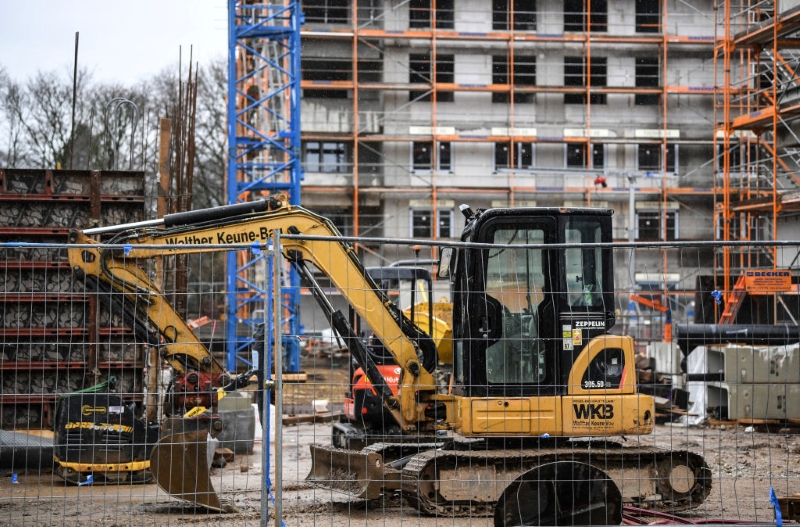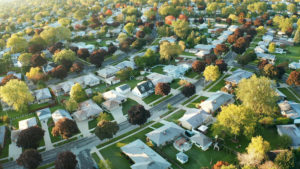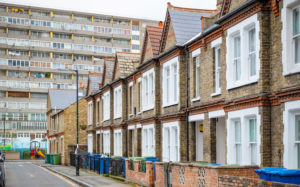
German models of communal housing development may offer solutions to U.S. housing problems.
The United States does not have a housing problem. It has multiple.
Housing costs are rising. High demand for city living is displacing low-income residents. And residential buildings account for 22 percent of U.S. energy consumption.
In addition, a majority of people in the United States know only some of their neighbors. Nearly a quarter of adults under 30 do not know any of their neighbors.
Germany, however, has pioneered a different way: baugruppen.
Baugruppen, meaning “building groups,” allow individuals to pool together money to finance, design, and create their own community of homes. Groups of residents forming baugruppen remove developers from the planning process to take a more active role in setting their own designs and social rules for their communities.
In Vauban, a neighborhood in Freiburg, Germany, baugruppen are the predominant form of housing. After the city of Freiburg purchased the Vauban land in 1990, local grassroot leaders successfully advocated that the city include citizen participation in the planning of the neighborhood’s design.
As a result, the city council made baugruppen the housing norm and set a goal to make the neighborhood a “sustainable urban district.” Groups of 10 to 50 families were then able to form baugruppen in Vauban—either by proposing their own or by answering calls for proposals from the city.
Vauban keeps costs down for residents by stating the cost of the land upfront to avoid bidding wars and giving priority to citizens over developers. And, by cutting out the developer from the process, citizens save approximately 25 percent on construction costs compared to those who used commercial developers.
Vauban also uses baugruppen to make the city more sustainable. A working group sets building efficiency standards, and the city compares the abilities of each group to meet Vauban’s sustainability goals, such as social diversity and ecological soundness. Many buildings in Vauban now meet or exceed efficiency standards, hit net-zero goals, and use passive designs to heat and cool homes without using electricity.
Some scholars have praised Vauban as “the world’s most successful model for sustainable urban development.”
One architecture professor commented that Vauban’s ability to keep prices low and choose baugruppen that meet sustainability goals changed the priority of the city from how to use land to make the most money to how to use it to meet residents’ needs.
Other countries, such as Austria, France, and the United Kingdom, have replicated Germany’s model of communal housing development. But baugruppen are not yet present in the United States.
Some co-housing models exist in the United States, but co-housing is still rare and tends toward rural, single-family homes compared to baugruppen, which tend toward urban, multi-story and multi-family buildings.
Although baugruppen could help combat U.S. housing problems, four challenges exist to bring them to the United States.
First, the success of baugruppen in Germany partially stemmed from receptive local governments. In the United States, because building plans and housing developments require government approval, interested groups of residents would need local governments to be open to their ideas.
Second, zoning laws may also pose a problem between residents and governments. A report from the American Planning Association found that in the United States, exclusionary zoning—a practice that restricts what types of homes may be built in an area, often to the detriment of historically marginalized groups—significantly threatens the ability of multifamily housing, the most common form of baugruppen buildings in Germany.
Third, some urbanists expect that, because this form of housing is relatively unknown in the United States, banks may be reluctant to lend to residents, which would mean residents would need to self-fund their baugruppen. And regulations adopted by the U.S. Securities and Exchange Commission (SEC) may impose roadblocks by requiring investors in large real estate developments to be accredited—a qualification people can only meet by having high incomes, assets, or professional certifications—and limiting the number of non-accredited investors on large real-estate projects to 35. These SEC requirements could inhibit many everyday people from pooling their investments for baugruppen.
Finally, some observers criticize baugruppen as possible only for communities that have enough money and knowledge to develop them. Florian Urban, a professor of architectural history at the Glasgow School of Art, has noted that, although baugruppen are excellent models of community participation in city planning, the German citizens that have made up baugruppen are often “moderately wealthy” and “privileged.”
Despite these challenges, German baugruppen have nonetheless shown successes in meeting sustainability goals, lowering housing costs, and making communities more social.
As Kristy Wang, a principal at Community Planning Collaborative, and Benjamin Grant, lecturer in real estate and design at UC Berkeley, have noted, although “the baugruppen concept is no silver bullet,” it can still help diversify buildings and meet the needs of U.S. families.



